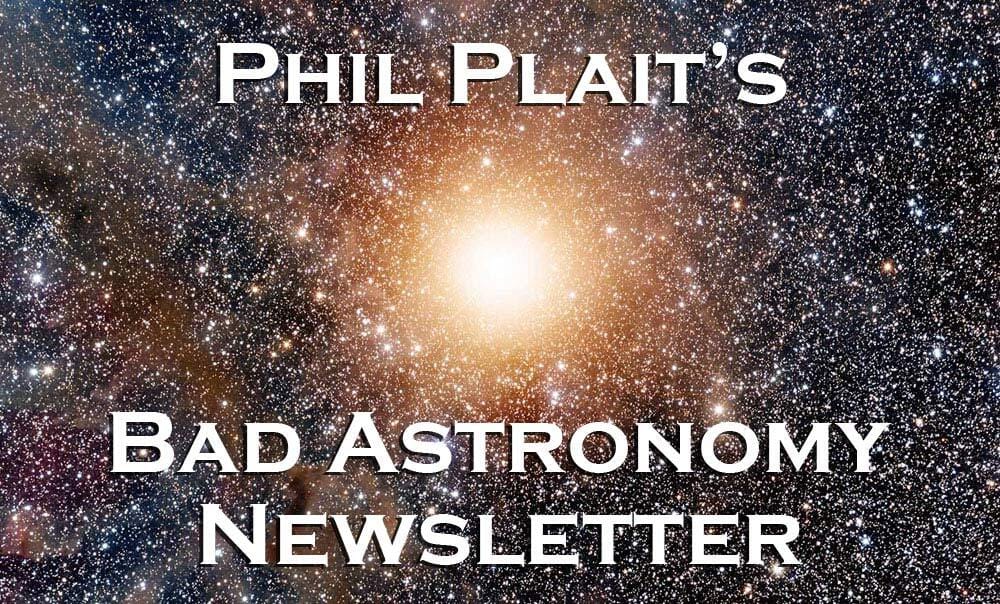- Bad Astronomy Newsletter
- Posts
- Vera Rubin Observatory will find millions of asteroids. Millions.
Vera Rubin Observatory will find millions of asteroids. Millions.
That’s a lot of space rocks.
June 26, 2025 Issue #897
First, something fun
Remember fun?
My friend Raya Yarbrough wrote a really interesting short scifi story that was published in Amazing Stories, and I really liked it. I won’t spoil it, but I’ll say it was different than anything I’ve read before, with a point of view that was really interesting and engaging.
She also narrates it, with the audio on that page. I love her voice. She really should do more voice work, but then, she already does do quite a bit.
Rubin Observatory: Asteroid Hunter
The newly opened ‘scope has already seen a LOT of asteroids, and it’ll find millions more
As I wrote my article for Tuesday’s issue about the first images released from the Vera Rubin Observatory, I started to talk about the asteroids it’s seen. However, the article was already running long, and I figured this topic deserves its own treatment.
Rubin, as a quick reminder, takes images of an incredible 9.6 square degrees of sky, about 50 times the size of the full Moon. It also goes deep, able to see very faint objects even in single exposures (it gets down to about 24th magnitude, depending on the filter; the faintest star you can see by eye is about 15 million times brighter!). It also takes short exposures — incredibly, each spot on the sky gets just 30 seconds per image.
This means it is a fierce asteroid hunter.
Asteroids are rocky and/or metallic bodies that orbit the Sun. Most are between the orbits of Mars and Jupiter in what we call the Main Asteroid Belt, but many get near Earth, and some get close enough to be potentially dangerous should they impact us. The first step in preventing such an impact is finding these rocks.
That’s harder than you’d think. The sky is huge and asteroids faint. Worse, they move rapidly enough that if you don’t get several images of the same spot in the sky taken in a row you might miss them. But this is how Rubin is designed to observe the sky. Mind you, Rubin is in Chile, so it only sees the southern sky plus a bit of the north, but that’s OK. We have a ton of asteroid-hunting ‘scopes north of the equator but relatively few to the south. Adding Rubin fills a big gap in our study of the sky.
How good is Rubin at spotting asteroids? It will see them in every single image it takes, and in fact there were quite a few in the released images of the Virgo Cluster and the Lagoon Nebula. For public release images the astronomers usually edit them out (using a software technique called a median filter that removes moving objects), but they’re in the original data off the camera.
In the few days it looked at the skies to get these early release images it discovered over 2,000 asteroids. And I do mean discovered: these were previously unknown rocks! That’s incredible. And that’s not all: over the next ten years of operation it’s expected to find about 3.7 million asteroids in the solar system — 3.7 MILLION — on top of the roughly one million already known.
The vast majority of these will be main belt asteroids, but a lot will be near-Earth ones as well. This will be a revolution in planetary science and defense!
Here’s a video describing how this works:
You can see these asteroids for yourself, too, in the interactive images set up by the folks at Rubin. Go to that link, and click on “I want to explore”. Once the image loads, click on the three horizontal lines at the upper left (the “hamburger”) and then Display. Finally, toggle the button that says, “Virgo Cluster with asteroids”.
What you will see are hundreds of streaks pointing every which way in the image. They’re not hard to spot because the streaks are like little rainbows! That’s because the final image displayed is actually a combination of three images, one each taken in a red, green, and blue filter. The asteroid appears as a dot or very short streak in each exposure, so when the images from the three filters are combined we get the rainbow streaks.

Subscribe to Premium to read the rest.
Become a paying subscriber of Premium to get access to this post and other subscriber-only content.
Already a paying subscriber? Sign In.
A subscription gets you:
- • Three (3!) issues per week, not just one
- • Full access to the BAN archives
- • Leave comment on articles (ask questions, talk to other subscribers, etc.)


Reply